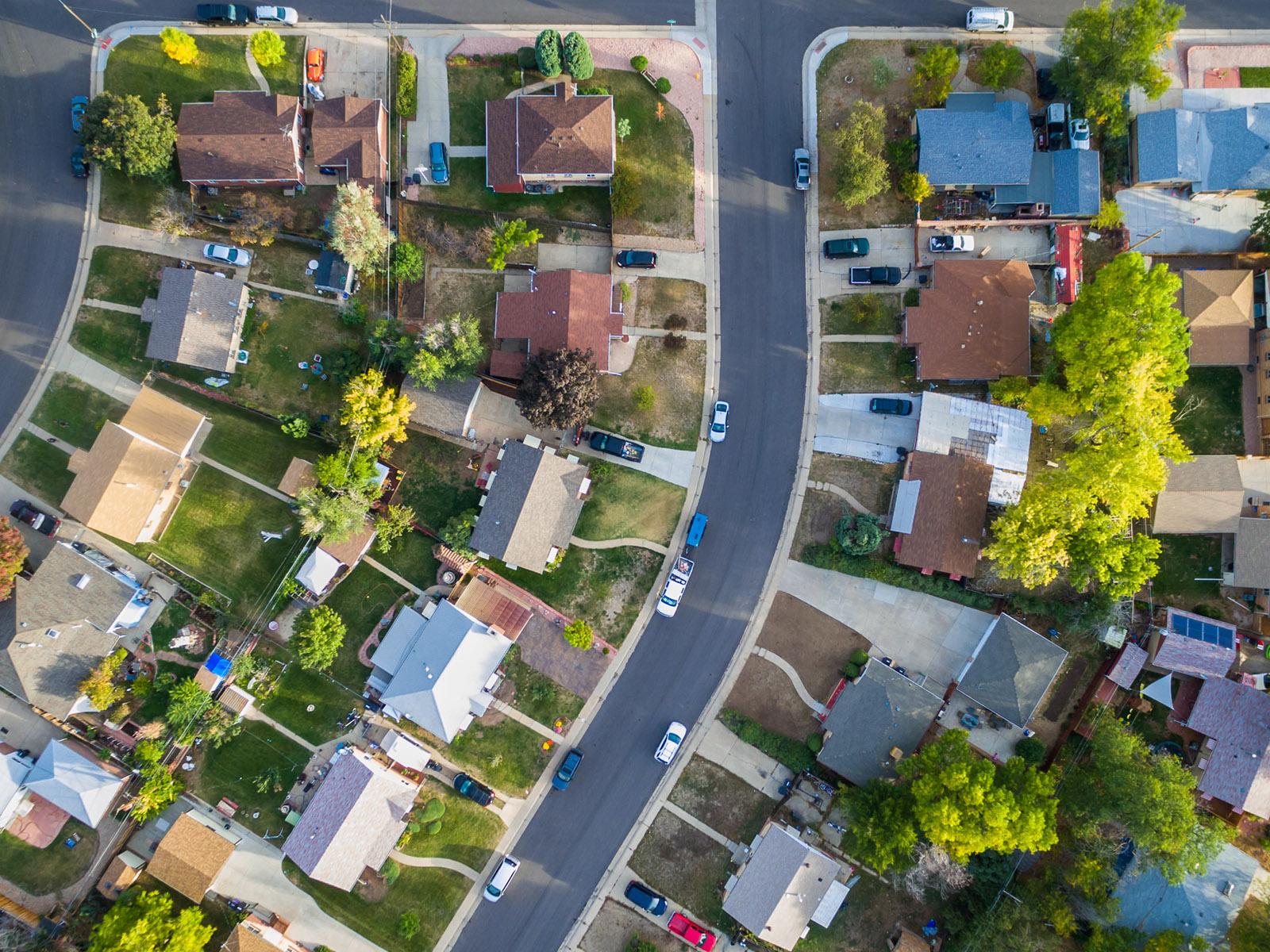Housing Analysis Frames Energy Equity Considerations
PNNL team probes, from an income perspective, energy code compliance in new homes

Researchers at PNNL have found that an area’s income levels can influence the incorporation of building energy codes in new housing, with implications for efficiency, resiliency, and energy equity.
(Photo by Arina P Habich | Shutterstock.com)
Researchers at Pacific Northwest National Laboratory (PNNL), tapping into a wealth of existing national housing data, have shown in an analysis that new single-family homes in lower-income counties often are not as compliant with building energy codes as new housing in higher-income counties. The findings could help drive strategies to extend the benefits of compliance to more homes nationwide.
“Our analysis looked at data from single-family and low-rise multifamily new construction,” said PNNL’s Chitra Nambiar, who led the analysis team. “We had a larger dataset to work with for single-family homes, where we found a statistically significant difference in energy code compliance and a correlation between socioeconomics and code compliance. For the low-rise multifamily, we looked at the code compliance rate in low-income and market-rate development types, but didn’t have a large enough sample to come to similar conclusions.”
Codes: benefits and challenges
Energy codes help guide construction of housing and address components such as insulation types and levels, structural tightness, and advanced lighting and windows, which enhance a home’s energy efficiency, comfort, and occupant health. Homes that are less compliant may not only miss out on these benefits and others, such as lower utility bills for owners and renters, but perhaps offer less resilience or protection to occupants during difficulties such as natural and manmade disasters.
Although there’s a national energy code for housing, states are given a level of flexibility in application. Additionally, various factors may influence county-level code implementation and enforcement. Sometimes, counties do not have the governmental resources to assure consistent enforcement, or perhaps builders may focus on home components that seem more critical, such as electrical, mechanical, and plumbing systems, rather than efficiency aspects. There’s also the possibility that buyers make efficiency-related decisions based on overall home affordability.
Existing data provides analysis insights
PNNL’s first-of-its-kind analysis was based on data from a previous, multi-year series of PNNL-led field studies in 20 states that gathered data on new single-family and low-rise multifamily residences and explored compliance-related issues.
In 2021, researchers took a deeper look at this field study data and thought about how the information could provide more insights into code compliance, looking across states and income distributions, and that led to the analysis project, which was funded by the Department of Energy’s (DOE’s) Building Technologies Office (BTO). The project supports DOE’s commitment to energy equity, which helps assure the department’s investments in energy efficiency extend to and benefit all levels of American society.
The analysis results led the researchers to conclude that new housing in lower-income counties reflected higher rates of noncompliance overall, with particular disparities in four individual energy efficiency measures for single-family homes: below-grade wall insulation, roof insulation, duct tightness, and structural tightness. Results for floor- and wall-insulation compliance were on par with higher-income counties. For multifamily structures, the researchers looked at the role of development type, rural or urban settings, and energy efficiency measure types to discern differences in code compliance.
In addition to disparities in code compliance, the study reveals for both single-family and multifamily new construction, electric-based heating is more popular in higher-income units.

Nambiar emphasized the findings are relevant only to data from the field studies in the 20 states and can’t be extrapolated more broadly to other lower-income communities.
She also noted that data limitations prevented a more complete understanding of the relationship between code compliance and high- and low-income counties, as well as deductions about whether one region of the nation is doing a better job with compliance than others. “Our work should be viewed as an initial approach to assess the impact of social and economic characteristics on energy code compliance and construction trends,” she explained.
Sharing results and next steps
The research team presented the analysis results at the American Council for an Energy-Efficient Economy’s Summer Study in August 2022. The presentation, according to Nambiar, generated significant interest from conference participants. “Beyond the positive response to our work, I sensed that people in the buildings community are thinking much more about equity issues,” she said.
At the 2023 BTO Peer Review, the team presented a poster, “Residential Energy Code: Is Compliance Equitable?” that provides more information about project findings. The team also produced a conference paper.
In addition to seeking funding for follow-on research in the codes and equity arena, PNNL is assisting the Southeast Energy Efficiency Alliance in a North Carolina field study that may help answer some of the questions posed in the PNNL team’s paper. Also, the team is developing an analysis that investigates the energy cost impact of lower compliance for newly constructed single-family units.
Current PNNL project team members, in addition to Nambiar, include Haripriya Sathyanarayanan, Harshil Nagda, and YuLong Xie. Past contributors to the analysis were Carmen Cejudo (PNNL) and DOE’s Ian Blanding, Chris Perry, and Michael Reiner.
Published: July 13, 2023